Transcription of Convolutional Neural Networks at Constrained Time Cost
1 Convolutional Neural Networks at Constrained Time Cost Kaiming He Jian Sun Microsoft Research Abstract commercial search engine needs to response to a request in real-time; a cloud service is required to handle thousands Though recent advanced Convolutional Neural Networks of user-submitted images per second; even for off-line pro- (CNNs) have been improving the image recognition ac- cesses like web-scale image indexing, the system needs to curacy, the models are getting more complex and time- handle tens of billions of images in a few days. Increas- consuming. For real-world applications in industrial and ing the computational power of the hardware can partially commercial scenarios, engineers and developers are often relief these problems, but will take very expensive commer- faced with the requirement of Constrained time budget.
2 In cial cost. Furthermore, on smartphones or portable devices, this paper, we investigate the accuracy of CNNs under con- the low computational power (CPUs or low-end GPUs) lim- strained time cost. Under this constraint, the designs of the its the speed of the real-world recognition applications. So network architectures should exhibit as trade-offs among in industrial and commercial scenarios, engineers and de- the factors like depth, numbers of filters, filter sizes, etc. velopers are often faced with the requirement of Constrained With a series of controlled comparisons, we progressively time budget. modify a baseline model while preserving its time complex- Besides the test-time demands, the off-line training pro- ity.
3 This is also helpful for understanding the importance of cedure can also be Constrained by affordable time cost. The the factors in network designs. We present an architecture recent models [1, 9, 22, 23] take a high-end GPU or multi- that achieves very competitive accuracy in the ImageNet ple GPUs/clusters one week or several weeks to train, which dataset ( top-5 error, 10-view test), yet is 20% faster can sometimes be too demanding for the rapidly changing than AlexNet [14] ( top-5 error, 10-view test). industry. Moreover, even if the purpose is purely for push- ing the limits of accuracy (like for the ImageNet compe- tition [20]), the maximum tolerable training time is still a 1. Introduction major bottleneck for experimental research.
4 While the time Convolutional Neural Networks (CNNs) [15, 14] have re- budget can be loose in this case, it is worthwhile to under- cently brought in revolutions to the computer vision area. stand which factors can gain more improvement. Deep CNNs not only have been continuously advancing the This paper investigates the accuracy of CNN architec- image classification accuracy [14, 21, 24, 1, 9, 22, 23], but tures at Constrained time cost during both training and test- also play as generic feature extractors for various recogni- ing stages. Our investigations involve the depth, width, filter tion tasks such as object detection [6, 9], semantic segmen- sizes, and strides of the architectures.
5 Because the time cost tation [6, 8], and image retrieval [14, 19]. is Constrained , the differences among the architectures must Most of the recent advanced CNNs are more time- be exhibited as trade-offs between those factors. For exam- consuming than Krizhevsky et al.'s [14] original architec- ple, if the depth is increased, the width and/or filter sizes ture in both training and testing. The increased computa- need to be properly reduced. In the core of our designs is tional cost can be attributed to the increased width1 (num- layer replacement - a few layers are replaced with some bers of filters) [21, 24, 1], depth (number of layers) [22, 23], other layers that preserve time cost. Based on this strategy, smaller strides [21, 24, 22], and their combinations.
6 Al- we progressively modify a model and investigate the accu- though these time-consuming models are worthwhile for racy through a series of controlled experiments. This not advancing the state of the art, they can be unaffordable or only results in a more accurate model with the same time unnecessary for practical usages. For example, an on-line cost as a baseline model, but also facilitates the understand- 1 In this paper, we use width to term the number of filters in a layer. ings of the impacts of different factors to the accuracy. In some literatures, the term width can have different meanings. From the controlled experiments, we draw the follow- 1. ing empirical observations about the depth.
7 (1) The net- 3. Prerequisites work depth is clearly of high priority for improving accu- racy, even if the width and/or filter sizes are reduced to A Baseline Model compensate the time cost. This is not a straightforward Our investigation starts from an eight-layer model simi- observation even though the benefits of depth have been lar to an Overfeat model [21] that is also used in [1, 9]. It has recently demonstrated [22, 23], because in previous com- five Convolutional (conv) layers and three fully-connected parisons [22] the extra layers are added without trading off (fc) layers. The input is a 224 224 color image with mean other factors, and thus increase the complexity. (2) While subtracted.
8 The first Convolutional layer has 64 7 7 filters the depth is important, the accuracy gets stagnant or even with a stride 2, followed by a 3 3 max pooling layer with degraded if the depth is overly increased. This is observed a stride 3. The second Convolutional layer has 128 5 5 fil- even if width and/filter sizes are not traded off (so the time ters, followed by a 2 2 max pooling layer with a stride 2. cost increases with depth). The next three Convolutional layers all have 256 3 3 filters. Through the investigations, we obtain a model that A spatial pyramid pooling (SPP) layer [9] is used after the achieves top-5 error (10-view test) on ImageNet [3] last Convolutional layer. The last three layers are two 4096- and only takes 3 to 4 days training on a single GPU.
9 Our d fc layers and a 1000-d fc layer, with softmax as the output. model is more accurate and also faster than several compet- All the Convolutional /fc layers (except the last fc) are with itive models in recent papers [24, 1, 9]. Our model has 40% the Rectified Linear Units (ReLU) [18, 14]. We do not ap- less complexity than AlexNet [14] and 20% faster actual ply local normalization. The details are in Table 1 (A). This GPU speed, while has lower top-5 error. model is narrower (with fewer numbers of filters) than most previous models [14, 10, 21, 24, 9]. 2. Related Work We train the model on the 1000-category ImageNet 2012. training set [3, 20]. The details of training/testing are in Recently there has been increasing attention on acceler- Sec.
10 5, which mostly follow the standards in [14]. We train ating the test-time speed of CNNs [17, 4, 11]. These meth- this model for 75 epochs, which take about 3 days. The ods approximate and simplify the trained Networks , with top-1/top-5 error is using the 10-view test [14]. some degradation on accuracy. These methods do not ad- In the following we will design new models with the dress the training time because they are all post-processes same time complexity as this model. We start from this of the trained Networks . Besides, when the testing time bud- model due to a few reasons. Firstly, this model mostly fol- get is given by demand, it is still desirable to find the pre- lows the popular 3-stage designs as in [14, 10, 21, 24, 9].

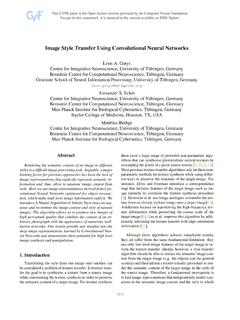
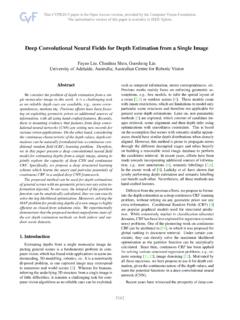

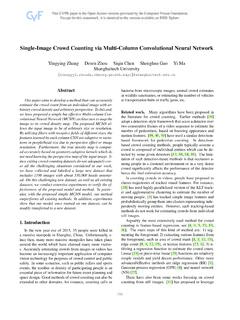


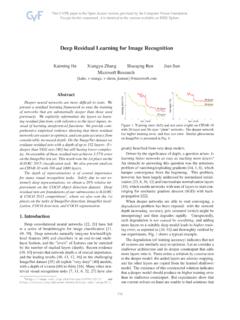


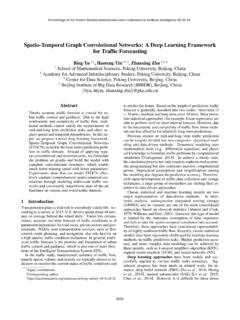




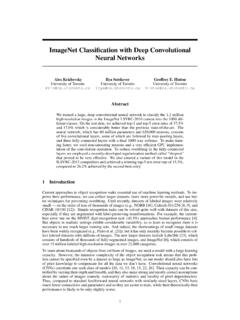
![arXiv:1408.5882v2 [cs.CL] 3 Sep 2014](/cache/preview/2/c/b/c/4/4/d/0/thumb-2cbc44d022447f6e8ab127ee8a6e3bd2.jpg)
